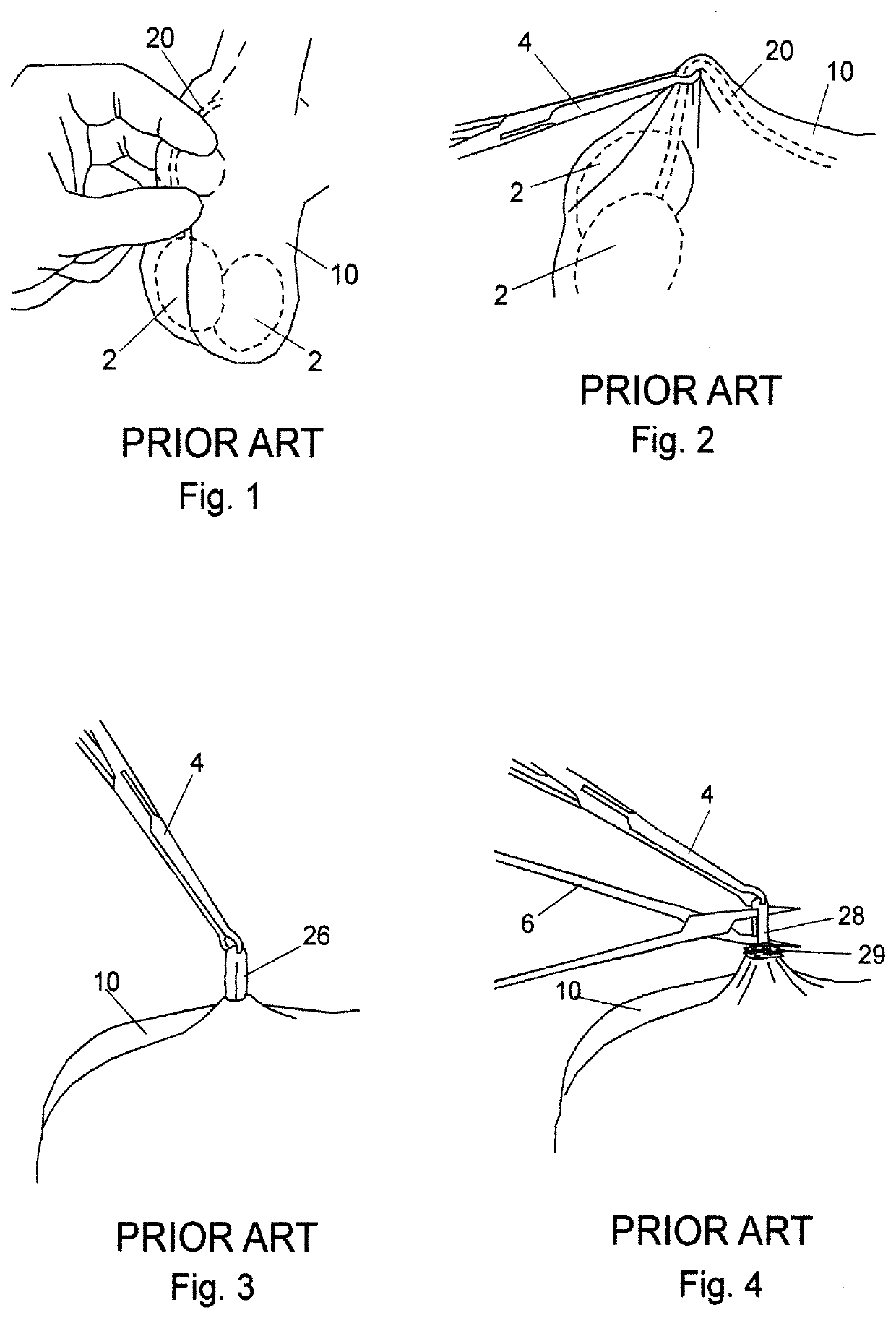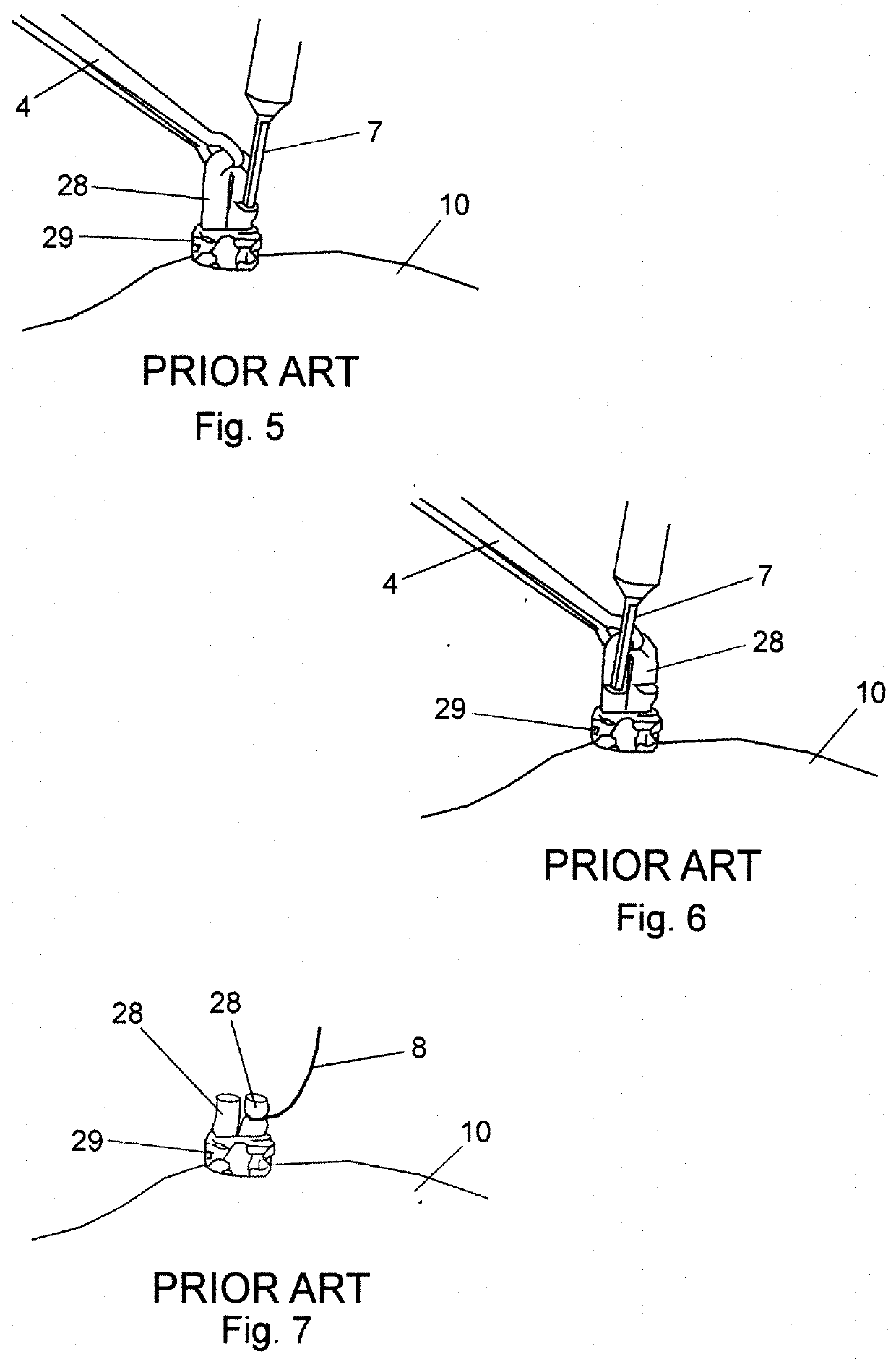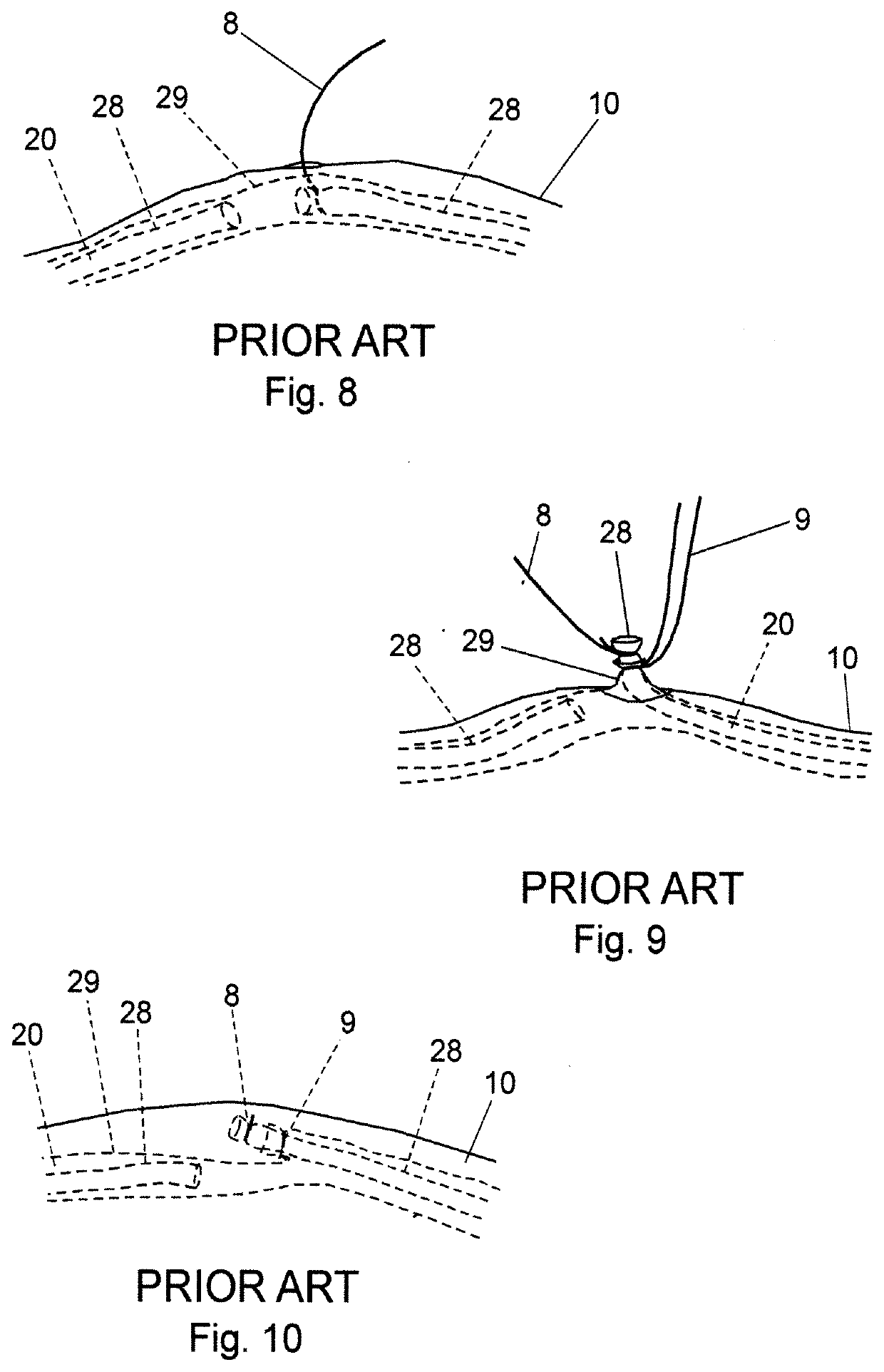Vasectomy devices and methods for their use
- Summary
- Abstract
- Description
- Claims
- Application Information
AI Technical Summary
Benefits of technology
Problems solved by technology
Method used
Image
Examples
examples
[0168]The most common method of vasectomy currently practiced is the no-scalpel vasectomy (NSV) in which the vas deferens is delivered from the scrotum via one or two openings formed by puncturing the scrotum and then expanding the opening(s). Steps of a standard prior-art NSV wherein a vas duct is occluded are depicted in FIGS. 1 through 10. In FIG. 1, a vas duct 20 is located in scrotum 10 using a standard three-finger technique. Thereafter, a local anesthetic is injected at the site. Duct 20 is then isolated in a fold of scrotum 10 using a ringed forceps 4 as shown in FIG. 2. The scrotum is then punctured using a dissecting forceps and the opening expanded sufficiently to allow the surgeon to deliver a portion 26 of vas duct 20 as depicted in FIG. 3. Dissecting forceps 6 are then used to puncture vas sheath 29 and then strip sheath 29 back to expose duct portion 28 as shown in FIG. 4. In FIGS. 5 and 6, duct portion 28 is hemi-dissected into abdominal and testicular portions, afte...
PUM
 Login to View More
Login to View More Abstract
Description
Claims
Application Information
 Login to View More
Login to View More - Generate Ideas
- Intellectual Property
- Life Sciences
- Materials
- Tech Scout
- Unparalleled Data Quality
- Higher Quality Content
- 60% Fewer Hallucinations
Browse by: Latest US Patents, China's latest patents, Technical Efficacy Thesaurus, Application Domain, Technology Topic, Popular Technical Reports.
© 2025 PatSnap. All rights reserved.Legal|Privacy policy|Modern Slavery Act Transparency Statement|Sitemap|About US| Contact US: help@patsnap.com



